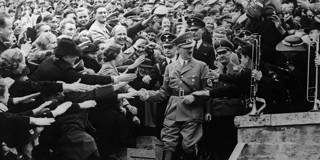OnPoint Subscriber Exclusive
Longer Reads provide in-depth analysis of the ideas and forces shaping politics, economics, international affairs, and more.

How Fascism Happens
In the face of renewed threats to democracy, historical knowledge of past dictatorships becomes as important as ever. After all, the Holocaust and World War II show what can happen when democracies allow themselves to be undermined from within.
DUBLIN – In the spring of 1933, following Adolf Hitler’s appointment as German chancellor, Thomas Mann was on holiday in Switzerland with his wife. While there, the Nobel laureate author received a warning from Germany that it would be unsafe for him to return. Now that the Nazis were in power, they wanted to send Mann to a concentration camp for having publicly opposed them.